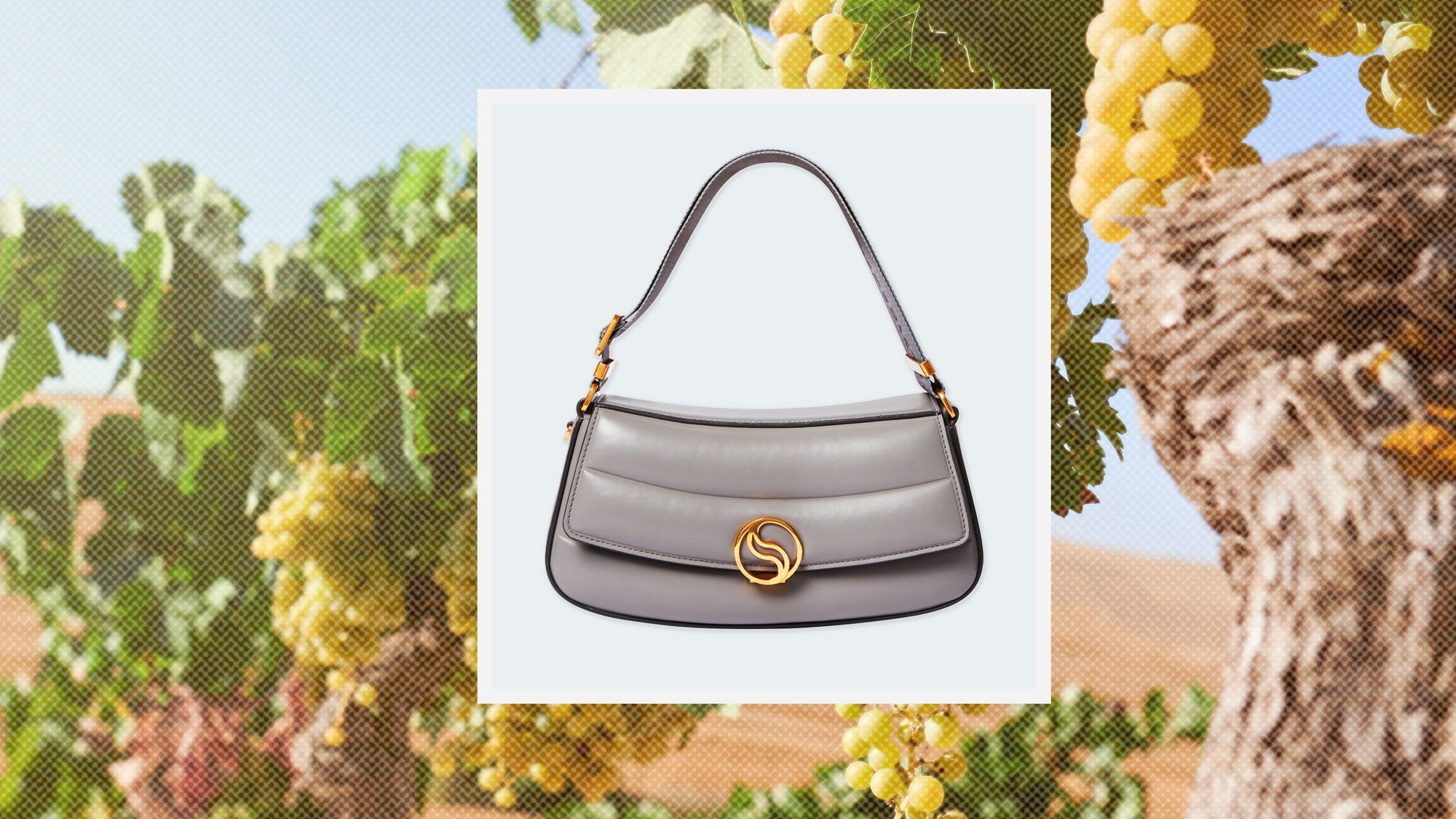Power Plants: The Stella McCartney S-Wave Bag
When grape remnants are combined with other materials, like natural fibers, the result is a grape-based leather alternative.

If you’ve ever sipped on Chardonnay or Petite Sirah, you’ll know that the wine swirling around your glass is the result of squeezing every last drop of liquid from the grapes. But what about the leftovers? Now, they can become your favorite accessory. Stella McCartney’s new S-Wave bag is among the first pieces from a luxury designer to utilize a leather made from grape skins.
“When I came across this grape-waste [leather] option, I was so excited not only because it is sourced locally from the wineries close to where our accessories are handcrafted [in Italy], but it also gives waste a second life,” McCartney writes via email. The material is the result of years of research and development, one of many newly tested animal-free materials that are supplanting traditional leather goods.
According to Samantha Mureau, founder of Planet of the Grapes, a company developing and producing grape leather that does not work with Stella McCartney, the process itself is still evolving. Generally, it involves taking the solid remains of grapes left over from winemaking, grinding them to a powder, and pouring them onto a sturdy base material to dry in a month-long procedure that’s similar to paper-making. Experimentation with different types of grape and different methods of production means the finished product is constantly improving. Relying on natural materials means that production is subject to fluctuations in weather and temperature, but as long as the wine industry continues its production, there will be cast-off material.
Since McCartney launched her eponymous brand in 2001, the designer has eschewed animal leather and fur, making alternative options a necessity. “Twenty years ago, strictly using cruelty-free alternative materials made me something of an ‘eco-weirdo,’” she explains. But today, plants and fungi are becoming increasingly popular alternatives to traditional leathers or “vegan” leathers made of polyurethane. Cactus, apple, mycelium, and now grapes are all part of a fashion-friendly salad that could lead to widespread responsible consumption through upcycled resources and biodegradable by-products. “Pushing the boundaries of technology is something I’ve always found exciting,” she says.
The bag itself, sleek and soft-edged, with a metal S buckle, draws inspiration from the minimalism of the ‘90s, combining a classic silhouette with material innovation. “The result is a bag that is traditional in a sense, while also being entirely new and reflective of the times,” McCartney says.
With the new grape-powered S-Wave, in addition to McCartney’s other plant-based explorations, the designer seems to be well on her way to making plants fashion’s most powerful ingredient.
Get exclusive access to fashion and beauty trends, hot-off-the-press celebrity news, and more.
Aemilia Madden is a freelance writer and brand consultant with over a decade of experience in the fashion industry. She’s written features for publications including Vogue, Harper’s Bazaar, Elle, The Cut, and The Wall Street Journal. She also writes a newsletter called Taeste Bud, a deep dive into taste—considered personally, universally, and not too seriously. Before going freelance, Aemilia was most recently senior editor at The Zoe Report.